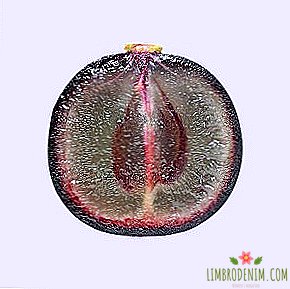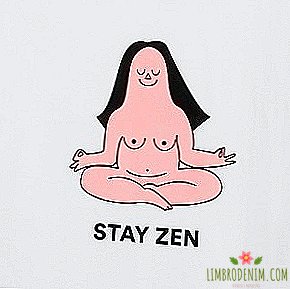Heytvotching: Why we look, read and listen to what we do not like
"It all started with that my girlfriend went abroad for a year to study abroad, ”says Martha. “She was infuriated by everything there: the people around her, her studies, the small, damp apartment in which she lived. And instead of day-to-day nagging each other, as we do not like the surrounding reality, we began to hate the show together. In the evenings — I am in Moscow, she is in Vienna — we simultaneously included the series “Doctor Zaitseva”, opened the messenger, and in details and colors walked through foolish characters, frail plot, and poor acting. That was enough - there was not a single respectable hero in the series. We hated non-existent people - they did no harm to anyone, but it made us feel better. "

Sasha Savina
For what Marta describes, there is a separate name - heytvotching (from the English hate-watch, that is, "watch and hate"). Heytvotching called a situation in which we persistently watch a movie or series that annoys us and does not cause a single positive emotion - and can not stop doing it, no matter how illogical it may seem. Of course, it’s not just TV serials - it happens, for example, that heytriding happens when we read something (a book, a blog, a website) that we don’t like at all, and heathlining when it comes to a podcast, radio or music. It happens and the desire to follow in social networks for a certain person who annoys us. In general, you can choose any medium - sincere irritation of what you see or hear is important here.
Heytvotching and kheytriding should be distinguished from guilty pleasure - situations when you watch, read or do something that is considered shameful, but at the same time get genuine pleasure from the process. In the first case, there is no place for pleasure, at least in its pure form. "Looking closer, we will see that we are pleasant, not vice versa. But pleasure is poisoned by feelings of guilt and ideas that we should not like this - too primitive, tasteless, low-grade, and so on," psychologist Maria Dolgopolova explains the phenomenon "sinful" pleasure.
At the same time, it is impossible to call the situation of “normal” hatred a heytvotching or heytriding, because this happens far from every movie, series or blog that we don’t like. Most often, we calmly pass by the fact that, as it seems to us, we may not like it or that we are not interested in looking - and only some things catch our attention for a long time. Obviously, something else comes into force here, except for pure anger and hatred.

It is simply impossible to call a heitching situation a hate - this does not happen with every film that we don’t like.
The idea to watch and read something that annoys us did not appear yesterday. Remember Florence Foster Jenkins - American singer, who became famous for the fact that she is incredibly fake. She was so lacking in vocal ability that her parents refused to pay for her music lessons, but later she continued to study herself - thanks to an impressive inheritance. She recorded several arias in her own performance (the first had very good sales - although, of course, not because of the quality of performance), and in 1944 she performed at Carnegie Hall in front of three thousand spectators and critics. True, a few days later she had a heart attack (probably caused by stress due to a lot of negative reviews and ridicule), and she passed away the following month.
Another example is the legendary “Room” Tommy Weisho, which many consider to be the worst movie ever made. Very bad acting, illogical plot and strange dialogues, actions of characters that have no meaning and are not similar to how real people behave - and at the same time truly cult status and regular film screenings, on which viewers throw objects in screen and chorus shout out the most famous replicas of heroes. The passion for "Room", of course, borders on guilty pleasure (the phrase "so bad it is already good" is very appropriate) - but it is difficult to imagine a situation in which someone will admire "Room" just like any other movie. This is a very special case.
It is believed that one of the first mass mentions of the phrase "heitvotchiga" appeared in the review of The New Yorker in 2012, where telecritic Emily Nassbaum talks about the difficult relationship with the TV series "Smash": she was delighted with the first series, but then the series categorically disliked her . “I understand that the passion with which I relate to the show seems a little suspicious. Indeed, why should I go out of my way to watch a show that annoys me so much? Obviously, in a sense, I enjoy it,” writes Nassbaum.

The worse the content of others, the easier it is to feel talented
Anyway, today the phenomenon can be considered ubiquitous: the more diverse content appears (and there are indeed more visual and textual information, thanks to the Internet, more than twenty years ago), the easier it is for everyone to find something that will cause a response from him. Someone, like Emily Nassbaum, continues to look at what she liked at first, and then stopped bringing pleasure. Anna says that the Heath Sawnawn is the “Walking Dead” series. At first, she was really looking forward to the new series and enjoyed watching the first two seasons; starting from the third or fourth, her friends gradually began to throw the series, but she could not do it. "It seems that in my heart I was hoping for some changes. There have been and are still gaps, but basically watching" Walking "is torture,” Anna admits. “The number of episodes in which nothing happens increases with every season, the behavior and actions of the characters often cause bewilderment and make you almost scream at the monitor, the hand almost does not come off his forehead, but I still continue. Why I do this is a big mystery, but I can’t stop it. rare cool series and because, in my opinion, about really good shot. Maybe after I like to watch your favorite TV shows on the contrast. "
Marta says that in her life there are a lot of different heithotnings - for example, with a friend for a couple, they read "Fifty shades of gray", quoting each other places that particularly irritated them. “Our next victim was the Russian adaptation of the Spanish TV series Angel or Demon. This series was simply created for self-affirmation, it was possible to criticize every second there,” Martha recalls. “I don’t argue, sometimes you use a heytwatch to nurture your sense of superiority. You think that you would never do such a frank shit. But strictly speaking, the worse the content, the easier it will feel to be talented. "
This is a common motivation: poor content is a quick way to feel better with minimal effort. “This is a definite competence, like fanaticism,” said Jolie Jensen, a professor of mass communication theory at the University of Tulsa. “You get pleasure from finding out why it doesn't bring you pleasure.”

Hatewatching often occurs with programs that stimulate our primitive emotional reactions.
Psychologist Maria Dolgopolova explains that heytvotching often occurs in relation to programs that stimulate our primitive emotional reactions. “We have a need to“ launch ”our emotional life, but constructive ways for“ activation ”may be lacking - and then what is available is what is at hand. Certain video and text content can emotionally involve well, but we are terribly disliked ", - says the expert. Martha also speaks of a similar effect: "For some reason, this is not a pity to waste time and energy. Maybe this is a sign of weakness or the lack of an emotional instinct of self-preservation - you cannot refuse hatred, you have to let it through you." Another possible cause of heitvotchiya Maria Dolgopolova calls "field behavior." This is a concept from neuropsychology: the mental regime, in which the neocortex (areas of the cerebral cortex that are responsible for higher nervous functions) minimally controls our actions, and we respond to the most striking stimuli. “Artistically speaking, we follow the path of least resistance. A simple example: we ask a person to name a thing that he would like to use. If he specifies objects duplicating those in his field of view now, this is field behavior. If he will climb into the coffers of imagination and recall a thing to which nothing currently refers to it, it will demonstrate more energy-intensive and complex functioning of the brain. Many television programs and texts are created, designed to lure and keep us in m "mode. If we spend a lot of time in this state, it becomes difficult for him to leave."
But not only the reasons for which we are fond of something that annoys us are important, but also how it affects us. On the one hand, this can be a quick way to discharge - Martha tells about this: "For me, this kind of pastime is a kind of therapy - it helps to both distract and calm down, and in a sense, meditation. But I am not proud of it." On the other hand, such an approach can also be harmful: for example, when we continue to watch by inertia what we don’t like, but we don’t give up, because we are used to bringing everything to the end. If there is a feeling that the habit of “diving” into a feeling of hatred affects the quality of life (for example, the feeling captures you so much that you need time to move away from it, or hayotching interferes with the usual rhythm of life and takes more and more space), perhaps it’s time think about whether to get rid of it. Maria Dolgopolova advises to overcome heytvotching the same ways that struggle with other types of addictive behavior (you can try to figure out what causes you to resort to the habit and whether there is any problem that you are trying to replace it; try to replace the habit with another, more useful; but if you cannot cope on your own - contact a specialist. Note ed.).
You can treat hitewatch differently: if for some it's a completely innocuous habit, then others may notice that because of it, there is no time for something that is really nice. In any case, it is important to listen to yourself and to your feelings - and not to do something that is really unpleasant and permanently unsettling.
Images:art-kamchatka - stock.adobe.com





